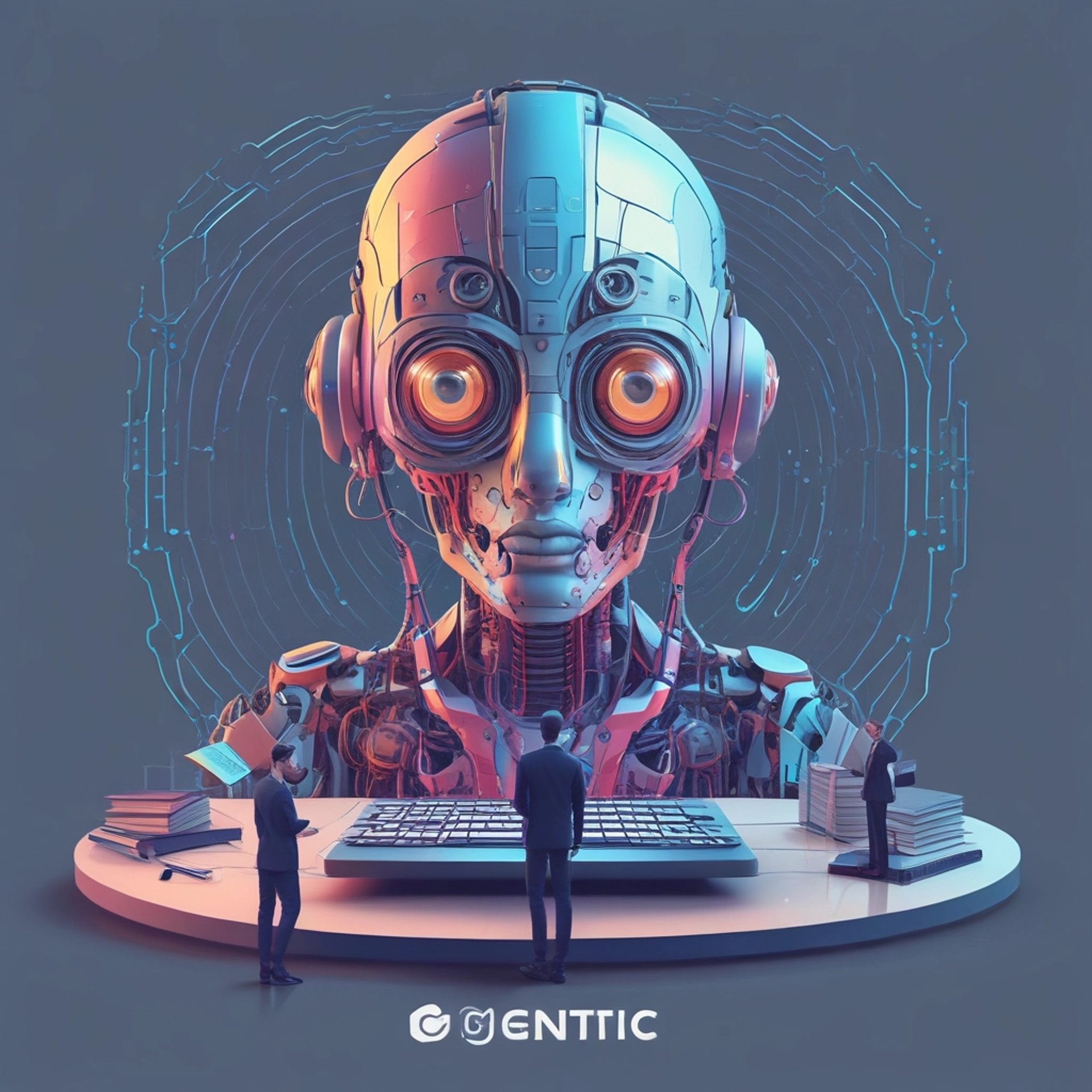
Agentic AI for Accounting & Bookkeeping — AI + Finance Automation with n8n (Tally)
Course Title:
Agentic AI for Accounting & Bookkeeping — AI + Finance Automation with n8n (Tally)
Level:
Beginner → Intermediate
Category:
Accounting & Bookkeeping Automation
Tools Used:
n8n, OpenAI API, Google Sheets, Gmail, Postman
Outcome:
Learners will build and deploy five production-grade accounting agents with memory, audit-ready reliability, and enterprise-level error-handling — becoming Certified AI Accounting Automation Practitioners (CAAP).
Course Overview
This course teaches learners how to automate accounting and bookkeeping processes using AI, n8n, and Tally-integrated data pipelines.
It bridges the gap between manual accounting operations and modern AI-driven automation by helping learners design, build, and deploy real accounting agents for tasks like reconciliation, payables, receivables, and GST compliance.
Learners will not only understand how AI agents function but also gain hands-on experience integrating OpenAI and Tally data into live workflows that handle validation, communication, and reporting — all with zero coding background required.
Must Complete Before Starting
Before beginning, learners must complete the following foundation courses to ensure readiness for automation and agentic systems:
Basics of Tally – Software Orientation & Key Concepts
Basics of Accounting & Bookkeeping – Foundation Course
Basics of AI – Foundation Course
Foundations of AI Automation for Accounting Agents
AI in Accounting & Bookkeeping — Tally Integration
These prerequisites ensure that participants understand accounting fundamentals, Tally data structures, and the foundational logic behind AI-powered automation.
Complete Course Curriculum
Module 1 – Foundations of AI, Agents & n8n Ecosystem
Duration: 45 minutes
Objective: Understand how AI and n8n workflows interact in accounting automation.
Key Topics:
Generative AI, LLMs, and agent structure
No-code vs low-code in finance
n8n user interface and workflow architecture
From ChatGPT → Workflow Agent
Project:
Demo Workflow: “From Chat Input to Accounting Summary”
Learners build a mini automation that converts plain-text accounting input into an AI-generated financial summary.
Outcome:
Learners gain a conceptual understanding of how AI and n8n form the foundation of intelligent accounting automation systems.
Module 2 – Setup, APIs & Webhook Triggers
Duration: 1 hour
Objective: Connect APIs, configure credentials, and understand webhook triggers for automation.
Key Topics:
Installing n8n (cloud and local versions)
Setting up API credentials and connections
Webhook creation, test events, and responses
JSON mapping and data transformation
Project:
Webhook → OpenAI → Gmail:
Create an automation that takes uploaded accounting data, summarizes it with OpenAI, and sends the result via email.
Outcome:
Learners understand API integration, trigger setup, and secure automation connectivity.
Module 3 – Workflow Design Without AI (Accounting Context)
Duration: 1 hour
Objective: Build logic-based automation workflows using accounting data before adding AI intelligence.
Key Topics:
Using IF, Merge, Split, and Loop nodes
Controlling data flow and branching logic
Logging and storing outputs in Google Sheets
Designing financial workflows that mirror real accounting processes
Project:
Expense Form → Ledger Entry Automation
Automate the process where form submissions log directly into an accounting sheet after validation.
Outcome:
Learners master logic-first workflow creation — the backbone of all automated accounting pipelines.
Module 4 – Adding Intelligence with OpenAI
Duration: 1 hour
Objective: Integrate OpenAI into accounting workflows to analyze and categorize data.
Key Topics:
Configuring the OpenAI node in n8n
Prompt design for accurate accounting insights
Structuring JSON responses for clean data logging
Defining AI roles: “You are an Accounting Assistant.”
Output formatting and structured record storage
Project:
AI Expense Categorizer — Reads text descriptions of expenses, classifies them into the correct chart-of-accounts category, and logs results in the ledger sheet.
Outcome:
Learners successfully integrate OpenAI into their automation to create smart accounting assistants that understand and process financial text data.
Module 5 – Prompt Design & Role-Based Agents
Duration: 1 hour
Objective: Master advanced prompting to build robust, role-aware accounting agents.
Key Topics:
Role-based and chain-of-thought prompting
Task decomposition for accuracy
Review-agent structure for second-level validation
Multi-turn verification logic
Project:
Ledger Reviewer Agent — Validates categorized ledger entries, flags irregularities, and provides recommendations.
Outcome:
Learners develop agents that can “think” like auditors, ensuring correctness and reliability of automated accounting data.
Module 6 – Context & Real Data Integration
Duration: 1.5 hours
Objective: Learn to process and validate real-world financial data, detect inconsistencies, and clean records.
Key Topics:
Connecting bank statements, ledgers, and GST data
Data cleaning for duplicates and mismatches
Detecting and managing missing fields
AI-assisted anomaly detection and explanation
Project:
Anomaly Detector Agent — Identifies duplicate transactions, missing ledger entries, and inconsistent data within imported accounting datasets.
Outcome:
Learners gain practical skills to handle imperfect data and ensure workflow accuracy before automation deployment.
Module 7 – Accounting Agents 1 & 2: Bank Reconciliation + Accounts Receivable
Duration: 2 hours
Objective: Automate high-frequency accounting functions with AI agents.
Projects:
1️⃣ Bank Reconciliation Agent – Automatically matches ledger entries with bank statement transactions, highlighting mismatches.
2️⃣ Accounts Receivable Agent – Tracks invoices, records receipts, and sends automated reminders for overdue payments.
Key Concepts:
Conditional matching logic
Date tolerance and pattern recognition
Automated email follow-ups
Daily AR and bank reconciliation summary reporting
Includes Quiz 1: Agent Logic Check (Bank Reconciliation + AR)
Outcome:
Learners deploy practical agents that save hours of manual reconciliation and receivables tracking.
Module 8 – Accounting Agents 3 & 4: Accounts Payable + GST Compliance
Duration: 1.5 hours
Objective: Build AI automations for payables and compliance tasks.
Projects:
1️⃣ Accounts Payable Agent – Extracts vendor bills, validates entries, schedules payments, and sends approval requests.
2️⃣ GST Compliance Agent – Compares GSTR-1 and GSTR-3B data to flag mismatches and reconciliation needs.
Key Concepts:
Validation nodes for purchase data accuracy
Human approval loops and multi-user collaboration
Audit trail and compliance reporting sheets
Outcome:
Learners automate vendor management, bill validation, and GST tracking processes with transparent, traceable workflows.
Module 9 – Accounting Agent 5: Payroll & Statutory Automation
Duration: 1 hour
Objective: Automate payroll calculations, compliance checks, and alerts.
Key Topics:
PF, ESI, and TDS calculation logic
Detecting anomalies or missing deductions
Approval workflows for sensitive transactions
Project:
Payroll & Compliance Agent — Generates pay slips, validates totals, checks deductions, and alerts HR to inconsistencies.
Outcome:
Learners automate payroll and statutory compliance with built-in validation and alerts, ensuring end-to-end accuracy.
Module 10 – Workflow Reliability & Error Handling
Duration: 1 hour
Objective: Build enterprise-grade reliability and accountability into every workflow.
Key Topics:
Common failure points in AI accounting workflows
Data validation and schema checks
Retry and delay logic
Error logging and versioning best practices
Weekly error summary reports
Project:
Error-Proof Reconciliation Agent — Detects blank entries, retries failed API calls, logs mismatches, and sends daily error summaries.
Outcome:
Learners can design workflows that never silently fail — every issue is caught, retried, and documented automatically.
Module 11 – Deployment, Testing & Capstone Project
Duration: 1.5 hours
Objective: Deploy and maintain fully automated accounting workflows with robust monitoring and auditing systems.
Key Topics:
Hosting on n8n Cloud or VPS
Environment variable management and credential security
Version control, rollback management, and testing
Alert systems for failure notifications and downtime reporting
Capstone Project:
🎓 AI Accounting Suite
Integrates all five agents (Bank Reconciliation, Accounts Receivable, Accounts Payable, GST Compliance, and Payroll) into a single, unified system.
Deliverables:
Workflow JSON exports
Validation screenshots
Reflection quiz and performance review
Includes Final Quiz: Comprehensive Agent Logic & Reliability Test
Outcome:
Learners create a complete AI-driven accounting automation suite, capable of operating independently with audit-ready accuracy.
Certification Outcome
Upon successful completion of all modules and the Capstone Project, learners earn the designation:
🎓 Certified AI Accounting Automation Practitioner (CAAP)
You Will Be Able To:
Build and deploy five production-grade accounting agents with full audit control.
Integrate AI and APIs (OpenAI, Google Sheets, Gmail, Tally data).
Detect and fix data mismatches, automate retries, and handle errors gracefully.
Maintain audit logs and ensure compliance with financial data safety.
Deliver ready-to-use automation workflows for accounting firms and clients.
Course Highlights That Make It World-Class
Real accounting datasets with duplicates, mismatches, and errors.
Mandatory implementation of error-handling and logging systems.
Built-in AI hallucination and data validation controls.
Progressive, project-first learning journey from basics to full automation.
Scenario-based quizzes that test real-world reasoning and workflow logic.
Certification based on applied results, not theory.
Learn
Empowering learners with skills and financial rewards.
Grow
Earn
© 2025. All rights reserved.
